Data access
Presentation
The POLDER-1 BRDF data base compiles 24,857 BRDFs acquired by ADEOS-1/POLDER-1 during 8 months, from November, 1996 to June, 1997, on a maximum number of sites describing the natural variability of continental ecosystems, at several seasons whenever possible. The POLDER-1 bidirectional reflectances have been corrected from atmospheric effects using the advanced Level 2 algorithms developed for the processing line of the ADEOS-2/POLDER-2 data. The BRDF database has been implemented on the basis of the 22 vegetation classes of the GLC2000.
In any publication using the POLDER-1/ADEOS-1 BRDF database, please include the following quotation : « The POLDER-1 BRDF database Issue 2.00 has been produced by POSTEL from an original algorithm developed by Noveltis. The data are from CNES POLDER-1 onboard NASDA ADEOS-1. »
The figures below present BRDFs of 5 various ecosystems acquired at 5 different periods : the bi-directional reflectances (%) at 670 nm (left) and 865 nm (right) are represented in the angular space. The major features of the BRDF are a peak of reflectance when the sun and the viewing directions coincide (the hot spot effect) and a minimum of reflectance in the forward scattering direction. These patterns are clearly displayed on the data collected in the principal plane (bottom). The width and magnitude of the hot spot phenomenon vary according to the ecosystems. It can be very useful to retrieve structural parameters of the vegetation or to quantify the spatial distribution of the major elements of the landscape (Lacaze et al., 2002)..
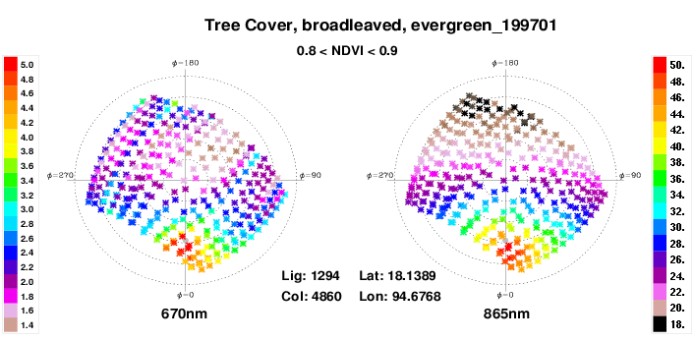
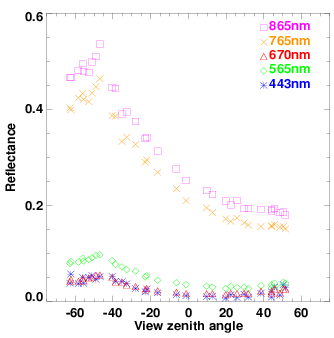
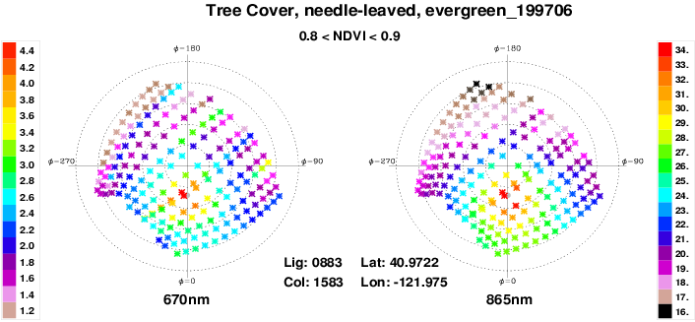
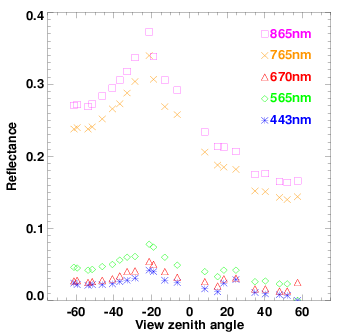
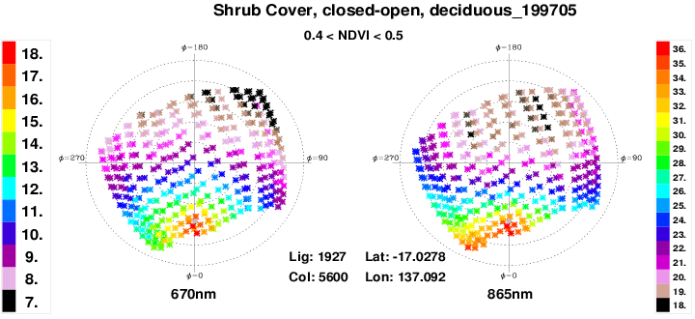
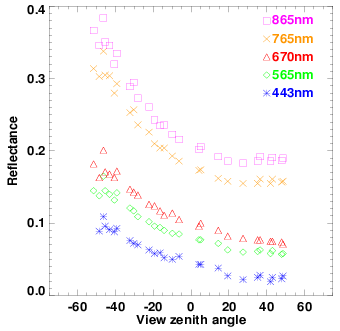
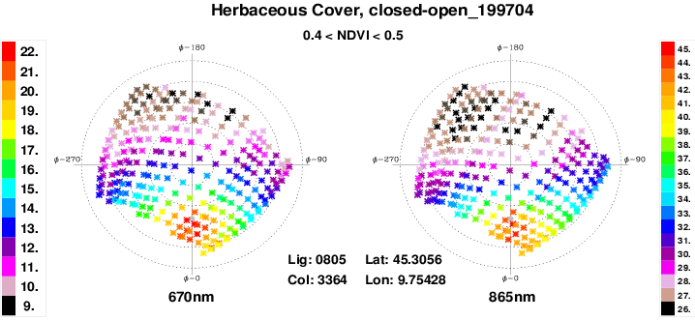
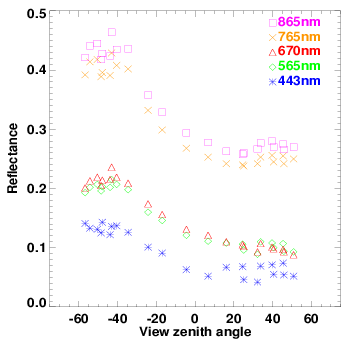
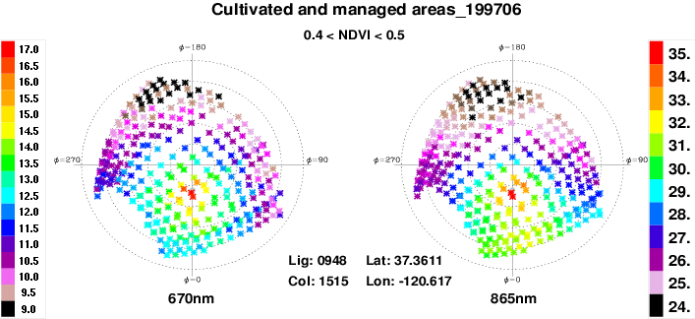
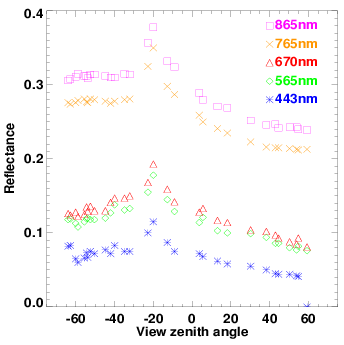
Format
A user manuel presents the algorithm of construction of the data base, analyses the BRDFs and describes the file format. The Visu_BRDF_POLDER software, developed by LSCE, allows to visualize the BRDF data base, to test 6 BRDF models, linear or non-linear, and to compare the results of model inversion with the measurements.
References
Lacaze, R., J.M. Chen, J.L. Roujean and S.G. Leblanc, Retrieval of vegetation clumping index using hot spot signatures measured by POLDER instrument, Remote Sensing of Environment, 79, 84:95, 2002.

